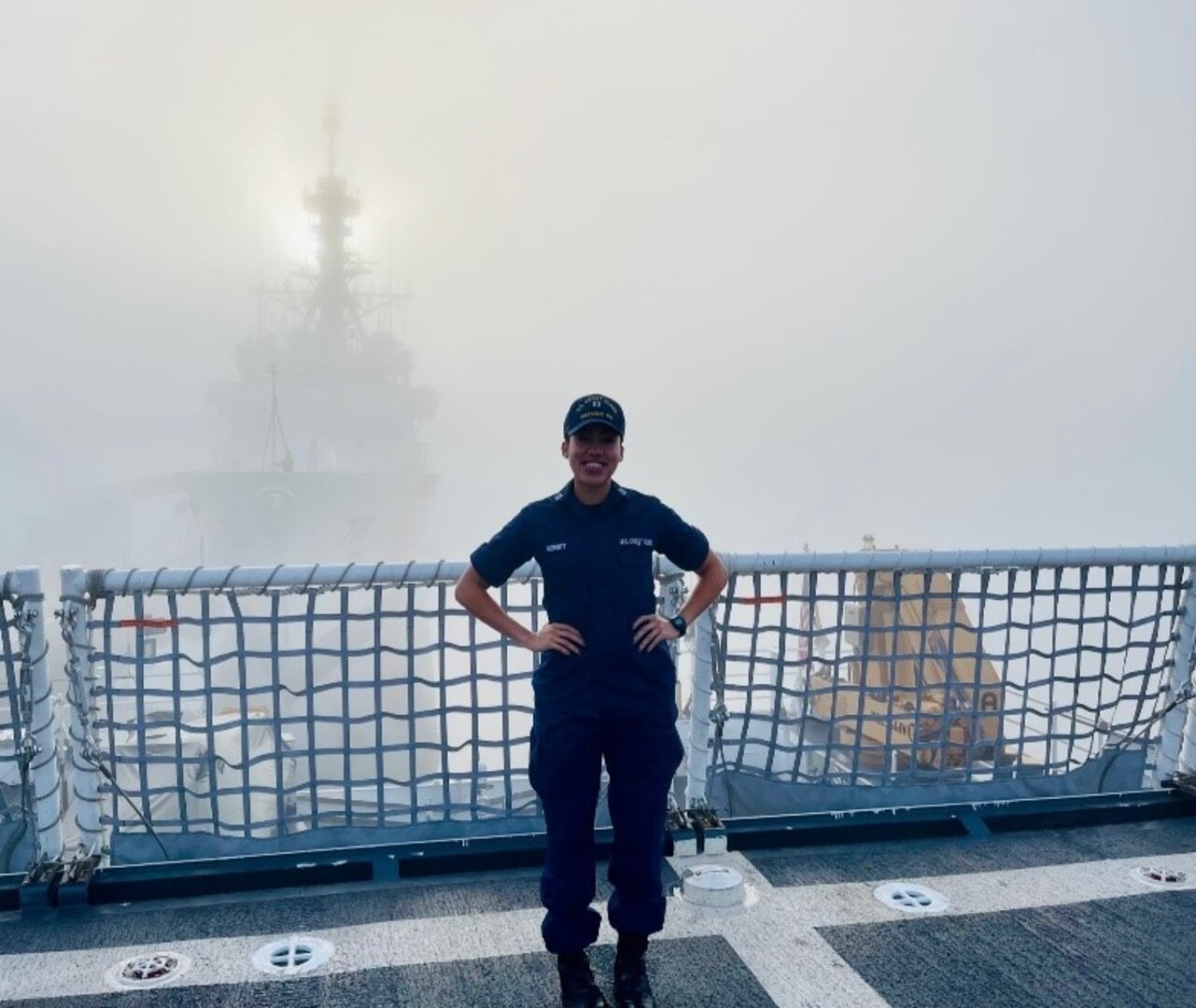Recently, the Coast Guard quietly took a big step: for the first time, more women were serving on small cutters than on large ones.
Although counts often fluctuate, in May 399 women were assigned to non-major cutters, while there were 389 women on major cutters, according to records kept by the Chief Petty Officer of the Division of Assignment of the enlisted personnel Ramona Mason, the Coast Guard’s Enlisted Women Afloat Coordinator. . Main cutters are classified as having a length of 210 feet or more.
It was a notable change in a contest that large cutters had previously owned by default – they were the only rigs large enough to have separate sleeping quarters for male and female crew. The number of assignments and billet distribution changes each assignment year, and at press time the large cutter fleet is now back in the lead with 515 females underway, compared to 490 females on the small cutters. But the fact that the numbers remain neck and neck is significant, says Mason, who expects to see the small fleet making progress again in the future.
“We are heading in the right direction to [women],” she said. “A few years ago, you wouldn’t have seen this, because women mostly had a choice of 210 and up. Now that we have more options going, it’s almost 50-50.
Thanks to recent policy changes, new vessels and modifications to existing cutters, women looking to sail in the 2023 assignment year have never had more choice, not just in terms of vessel size. and crew, but on mission, whether or not they are patrolling inland waters or at sea. And this at both junior and senior level.
This expansion of opportunities has been driven in large part by the recapitalization of the fleet. All new cutters are designed with mixed mooring. Already, Mason noted, there are more women (198) on the new 154-foot fast-response cutters than on the 210-foot cutters that were their primary option (186). “It’s a huge win,” Mason said.
In recent years, Mason and other service members have worked to find additional opportunities on legacy cutters, as recapitalization efforts catch up with demand for this area of service at sea and the need for time afloat that matches the member needs.
Many of these new options have come from converting existing platforms to accommodate both men and women. More recently, the Personnel Service Center (PSC) advocated for more opportunities to have women on New York’s 65-foot river tenders. This was achieved by converting the bulkhead, which once housed the Executive Chief Petty Officer (XPO), into a two-woman quarter. The Coast Guard also began converting its 140-foot icebreaker tugs so that women could also serve on these cutters. Coast Guard Cutter Mobile Bay is currently being converted with completion scheduled for summer 2022.
In addition, the service recently changed rating requirements to allow Machinery Technicians (MK) and Journeyman Electricians (EM) to fulfill the role of EPO Engineer NCO on all cutters, which also expanded the positions. available for women.
Petty Officer 2nd Class Ayisha Loya is already reaping the benefits of expanded options for women afloat. As a machinery technician, Loya has accumulated two years afloat and knows she needs one more to advance to first class. After a successful tour aboard the Coast Guard Cutter Robert Goldman as it transited to Bahrain, she decided to explore the opportunities of the Inland River Fleet.
In February, Loya began serving on the Coast Guard Cutter Wire, a 65-foot ice-breaking tug stationed on the Hudson River. Rather than sailing across the ocean and searching for drug and arms smugglers, she now focuses on maintaining the waterway for commerce and taking care of aids to navigation (ATON). She especially appreciates the chance to experience Coast Guard service close to home and try her hand at a new mission.
“I feel lucky because the 65s are super desirable boats,” she said. “You’re only on the way for two or three days at a time, and there’s no cook, so you’re responsible for your own food. It’s not like you go offshore where you lose touch with the outside world.
While her family currently consists of two Labradors, Loya says she enjoys seeing them more often and appreciates the flexibility of her new position. “It would be a perfect way for women with children to get the sea time they need and have a home life,” she said. “I don’t think anyone is asking for a better opportunity. We just want ties.”
For more information on Women Afloat opportunities, contact Ramona Mason, Enlisted Personnel Assignment Division, Senior Chief Petty Officer, at (202) 795-6573
Sea Duty Readiness Council (SDRC) initiatives to open up opportunities for women on former black hulls:
- Women’s berthing sets installed on 65ft construction tenders (completed on Coastguard wires, lines and hawser from Feb 2022)
- Conversion of women’s berthing on a 140ft Bay-class icebreaker tug (Coastguard Morro Bay is currently under construction, completion expected summer 2022)
- Signed policy change allowing women to serve on all six 65ft inland river tenders (installation of a berthing area gate, policy change allowing members of different genders to cross the berthing of the another to reach the head Transit through opposite sex berthing is common on board other classes of cutters to conduct circle checks etc.).
Recent News:

